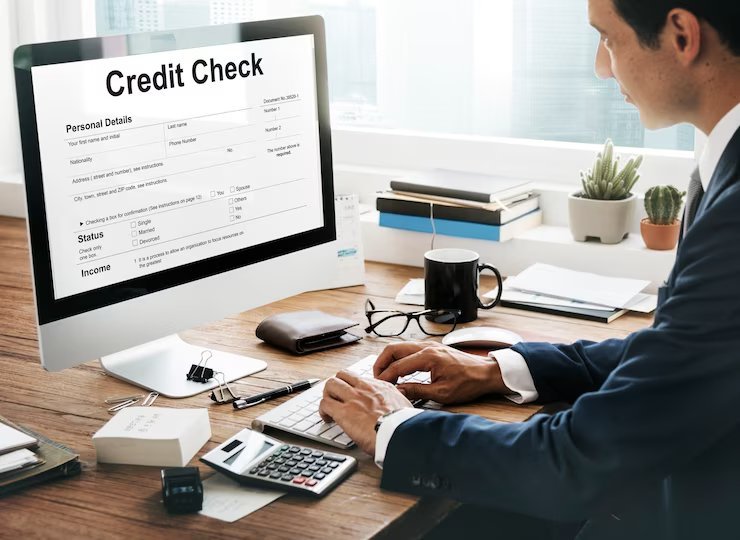Buying a domestic is an thrilling and sizeable milestone in life. For maximum human beings, it entails removing a mortgage loan to finance the purchase. A mortgage is a huge economic commitment, and one of the key elements that decide the fee of your loan is the hobby fee. A low-interest fee can save you hundreds of dollars over the lifestyles of your mortgage. In this text, we’re going to percentage some insider tips on a way to steady a low-interest mortgage loan, in simple words that anybody can apprehend.
1. Understand What A Mortgage
Before we dive into the hints, it’s essential to recognize what a mortgage is. A mortgage is a loan that you take out to buy a residence. Instead of purchasing the complete residence upfront, you borrow money from a lender (typically a bank or a loan enterprise) and comply with pay it returned over a exact period, often 15 to 30 years. The lender charges you interest on the cash you borrow, which is the price of borrowing.
2. Check And Improve Your Credit Score

Your credit score is like your financial report card. It tells lenders how reliable you are at repaying debts. A higher credit score typically leads to lower interest rates on your mortgage. To improve your credit score, pay your bills on time, reduce outstanding debts, and avoid opening new credit accounts before applying for a mortgage.
3. Save For A Down Payment
A down payment is a lump sum of money you pay upfront when buying a house. A larger down payment can help you secure a lower interest rate. Lenders often require a down payment of at least 3-20% of the home’s purchase price. The more you can put down, the less you’ll need to borrow, and this reduces the lender’s risk, potentially leading to a lower interest rate.
4. Shop Around For Lenders
Don’t settle for the first lender you come across. Mortgage interest rates can vary from lender to lender, so it pays to shop around. You can compare rates and loan terms from different lenders to find the one that offers you the best deal. Online tools and mortgage brokers can help you find competitive offers.
5. Consider A Fixed-Rate Mortgage

There are different types of mortgage loans, but one of the most popular is the fixed-rate mortgage. With a fixed-rate mortgage, your interest rate remains the same for the entire loan term. This means your monthly payments won’t change, providing stability and predictability. Fixed-rate mortgages often have slightly higher interest rates than adjustable-rate mortgages initially, but they can save you money over the long term if interest rates rise.
6. Choose A Shorter Loan Term
The typical mortgage loan term is 30 years, but you can also opt for a shorter term, such as 15 or 20 years. Shorter loan terms usually come with lower interest rates. While your monthly payments will be higher, you’ll pay less interest over the life of the loan and own your home outright sooner.
7. Pay For Points
Mortgage points, also known as discount points, are fees you can pay upfront to lower your interest rate. Each point typically costs 1% of the loan amount and can reduce your interest rate by a fraction of a percentage point. Paying for points can be a smart move if you plan to stay in your home for a long time because it can save you money in the long run.
8. Consider Government Programs
Various government programs goal to make homeownership more handy and less costly. For instance, the Federal Housing Administration (FHA) and the Department of Veterans Affairs (VA) offer loans with competitive hobby prices and lower down payment requirements for eligible debtors. Explore those options if you qualify.
9. Reduce Your Debt-to-Income Ratio

Lenders assess your ability to repay a mortgage by looking at your debt-to-income ratio (DTI). Your DTI is the percentage of your monthly income that goes toward paying debts. To improve your chances of getting a low-interest mortgage, aim to lower your DTI by paying down existing debts or increasing your income.
10. Be Prepared To Provide Documentation
When making use of for a mortgage, you’ll need to offer various economic documents, inclusive of tax returns, bank statements, and proof of profits. Being organized and having all of the necessary documentation prepared can streamline the utility process and enhance your possibilities of approval at a aggressive fee.
11. Lock In Your Rate
Mortgage interest rates can fluctuate daily. To avoid unexpected rate increases, you can request a rate lock from your lender. This means that the lender will guarantee your interest rate for a specified period, usually 30 to 60 days, while you complete the mortgage application process.
12. Be Patient And Flexible
The mortgage technique can be time-consuming and can contain some surprising twists and turns. Be affected person and bendy during the method. Understand that it might take some time to stable the excellent deal, however the attempt may be well well worth it ultimately.
Conclusion
Securing a low-interest mortgage loan is essential for saving money on one of the most significant financial commitments of your life. By understanding the basics of mortgages, improving your credit score, saving for a down payment, shopping around for lenders, and considering various loan options, you can increase your chances of securing a mortgage with a low-interest rate.
Remember that each person’s financial situation is unique, so it’s essential to tailor these tips to your specific circumstances. With the right approach and some patience, you can find a mortgage loan that fits your budget and allows you to achieve your dream of homeownership.
Also Refer : How To Choose The Perfect Startup Business Loan
FAQs
1. How do I check my credit score?
You can obtain a free copy of your credit report from each of the three major credit bureaus (Equifax, Experian, and TransUnion) once a year. Review your report for errors and monitor your score regularly using free credit monitoring services.
2. What’s the ideal down payment percentage?
While 20% is often recommended to avoid PMI and secure better rates, some lenders accept lower down payments. However, keep in mind that a higher down payment can lead to better loan terms.
3. What factors influence my mortgage eligibility?
Lenders consider various factors, including credit score, income, employment history, debt-to-income ratio, and the loan-to-value ratio (LTV) when determining mortgage eligibility.
4. Is refinancing a good option?
Refinancing can be a smart move if you can secure a lower interest rate and reduce your monthly payments. However, consider the associated costs and how long you plan to stay in your home.
5. How often should I monitor mortgage rates?
It’s a good idea to keep an eye on rates periodically, especially if you’re considering refinancing. Rate trends can change over time, impacting your potential savings.
Source Image : Freepik.com





